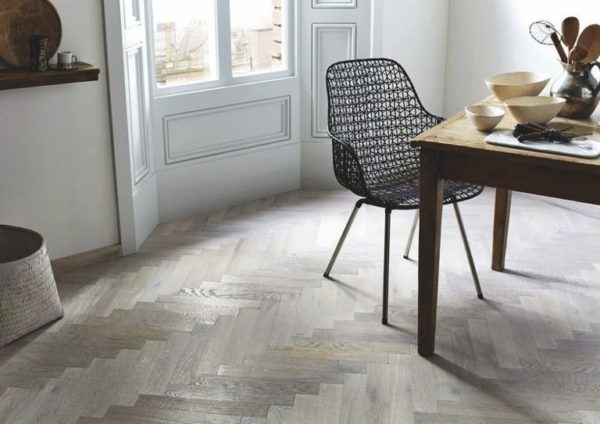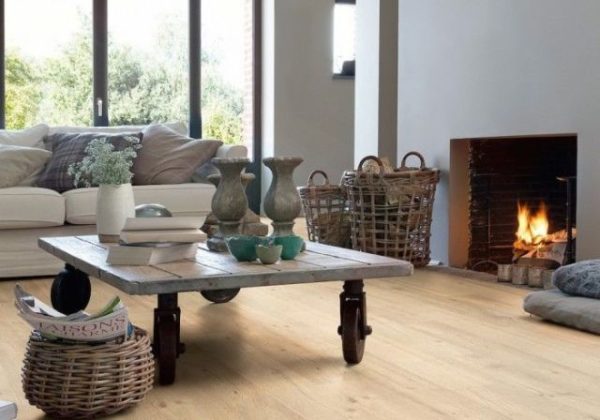Are you ready for a house-wide renovation? Or perhaps you’re looking for ways to upgrade one particular space in your home? Whatever your plans, wood flooring is one way to not only add value to your nest, but also add personality and the tranquility of nature.

Many of the woods typically used in interiors are oak, pine and ash. Each plank tells a story, adding a unique depth to your rooms that goes far beyond the surface.
For a truly stunning impact, consider single plank parquet as an option that combines the timeless appeal of wood with the elegance of a classic pattern. The single plank design allows the wood’s natural grain to shine through, bringing an understated luxury to any room.
Parquet floors in single plank style aren’t just a practical choice; they offer a visual continuity that makes spaces feel more open and cohesive. With each plank arranged thoughtfully, you’ll create a foundation that’s not only durable but also a beautiful work of art underfoot.
While working on a wood project, one of the important things you need is the wood glue to hold your flooring together. There are many types of glues available on the market. But which one is the right for your project?
In this article, we are going to tell you the different types of wood glue and how to use them.

Epoxy
Epoxy glue comes in two parts; a hardener, and a resin. You need to mix these two agents in the right proportion before applying them. Both parts are in liquid form, but once you mix them: a chemical reaction occurs, which makes them harder. One of the benefits of epoxy is the fact that it’s waterproof and helps fill the gaps between the joint. While some other types cannot fill the gaps.
PVA Glue
PVA (polyvinyl acetate) is a type of glue that is of the most common kind. Polyvinyl acetate means that the glue is odorless and colourless adhesive. It is also a good solution for completing your wood project.
This glue comes in different colours such as yellow, white, etc. There is also a waterproof type called Titebond III. One of the big advantages is that it is easily available at any hardware store. However, it is important to remove any excess glue from the wood, as it can affect the finish.
So before applying glue, you should place a line of masking tape. Then flip the pieces of wood and apply the glue inside the joint. Use a clamp to hold both of the pieces together and remove any excess glue.
Polyurethane Glue
Moisture is needed for the glue to activate and dry. It dries quickly and becomes very hard. Moreover, it is waterproof and appropriate for many different projects. You can use it in both indoor and outdoor interior projects.
You need to wet the pieces with a cloth and then apply the glue. Clamp the pieces together and give it 24 hours to dry. You also need to clean off the excess using mineral spirits, as it can affect your finish.
Hide Glue
Hide glue means it comes from animal hides. It has two main types:
The first type is called hot hide glue. It is made by heating the hide glue with water in a pot. After heating, it becomes liquid and hard as it cools. You can use a brush to apply it inside the joint. The second type is liquid and comes in a bottle. You can use it like a PVA glue, but it has an advantage of not affecting the finish, in case you do not remove the excess. I will recommend you; mix the glue with sawdust to give it the same color as the wood.
Cyanoacrylate Glue
This type helps to join hard pieces of wood. One of the benefits of this type is that it can cure in a short amount of time. You can also use an accelerant to speed up the process even further. It makes a very hard join, which you can break with an impact.
